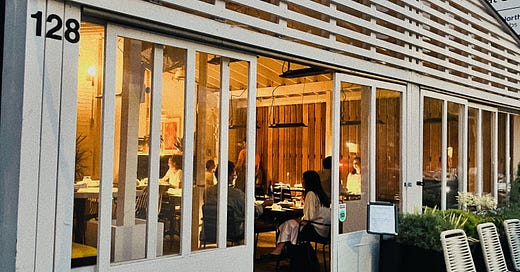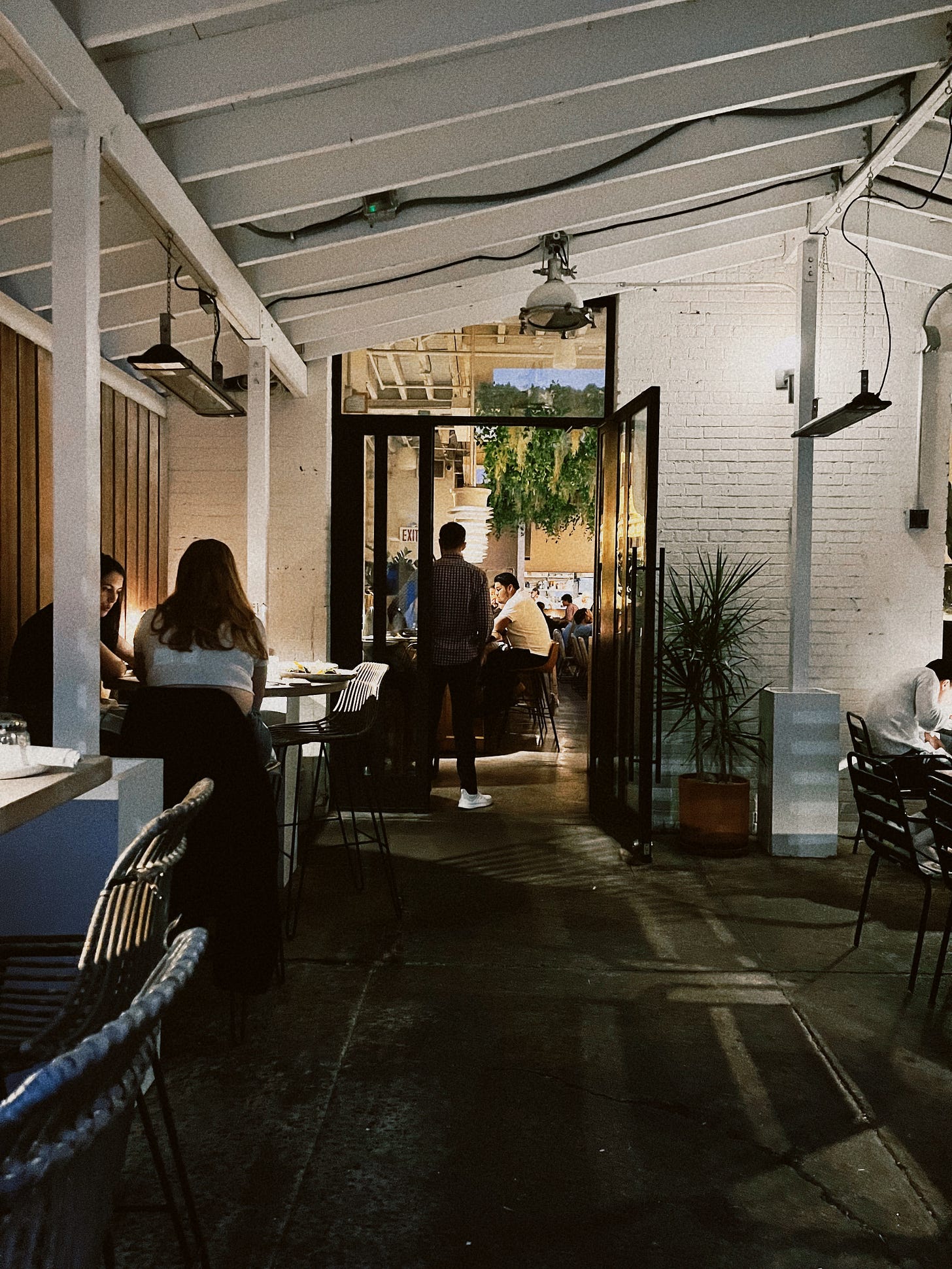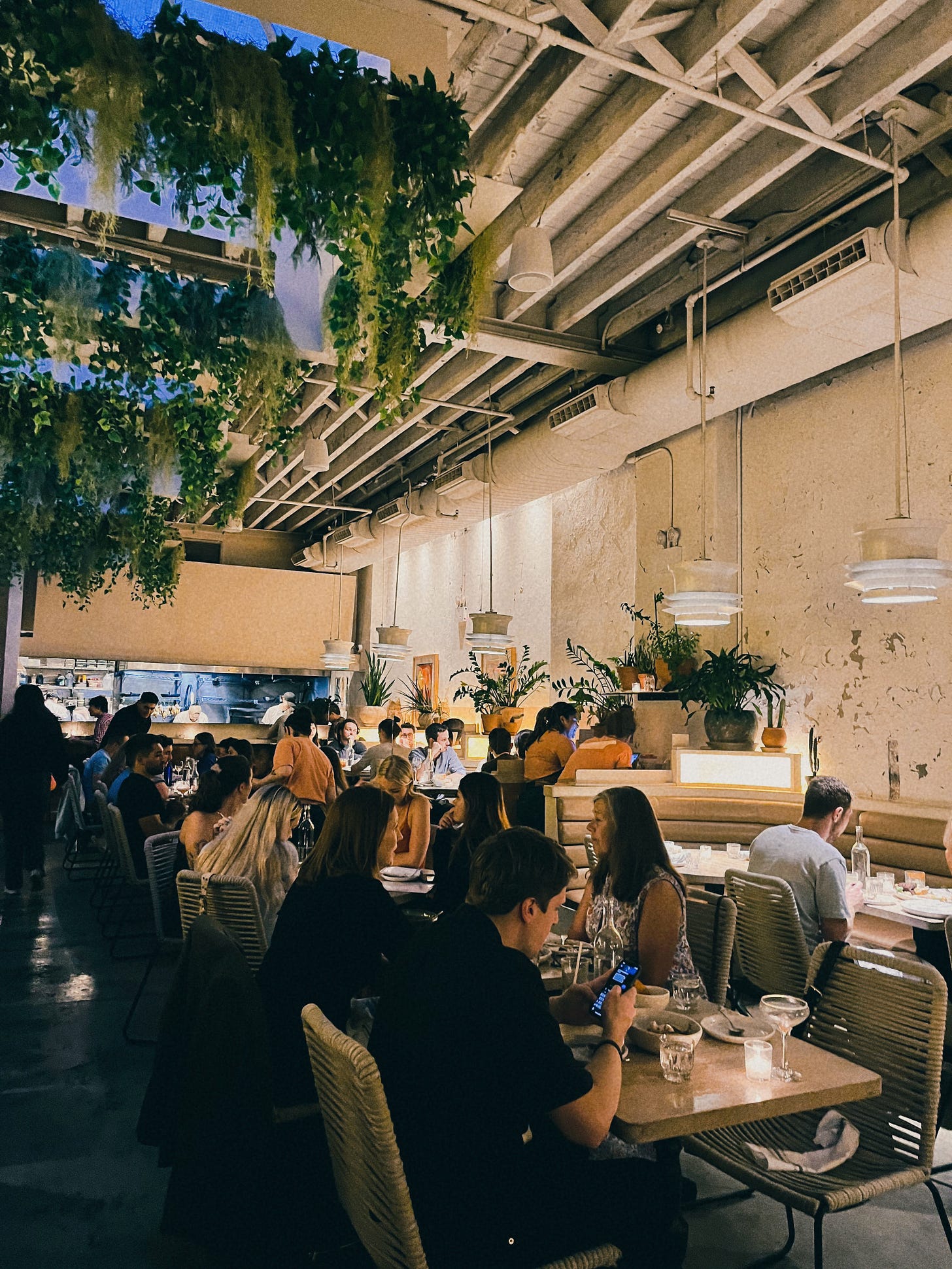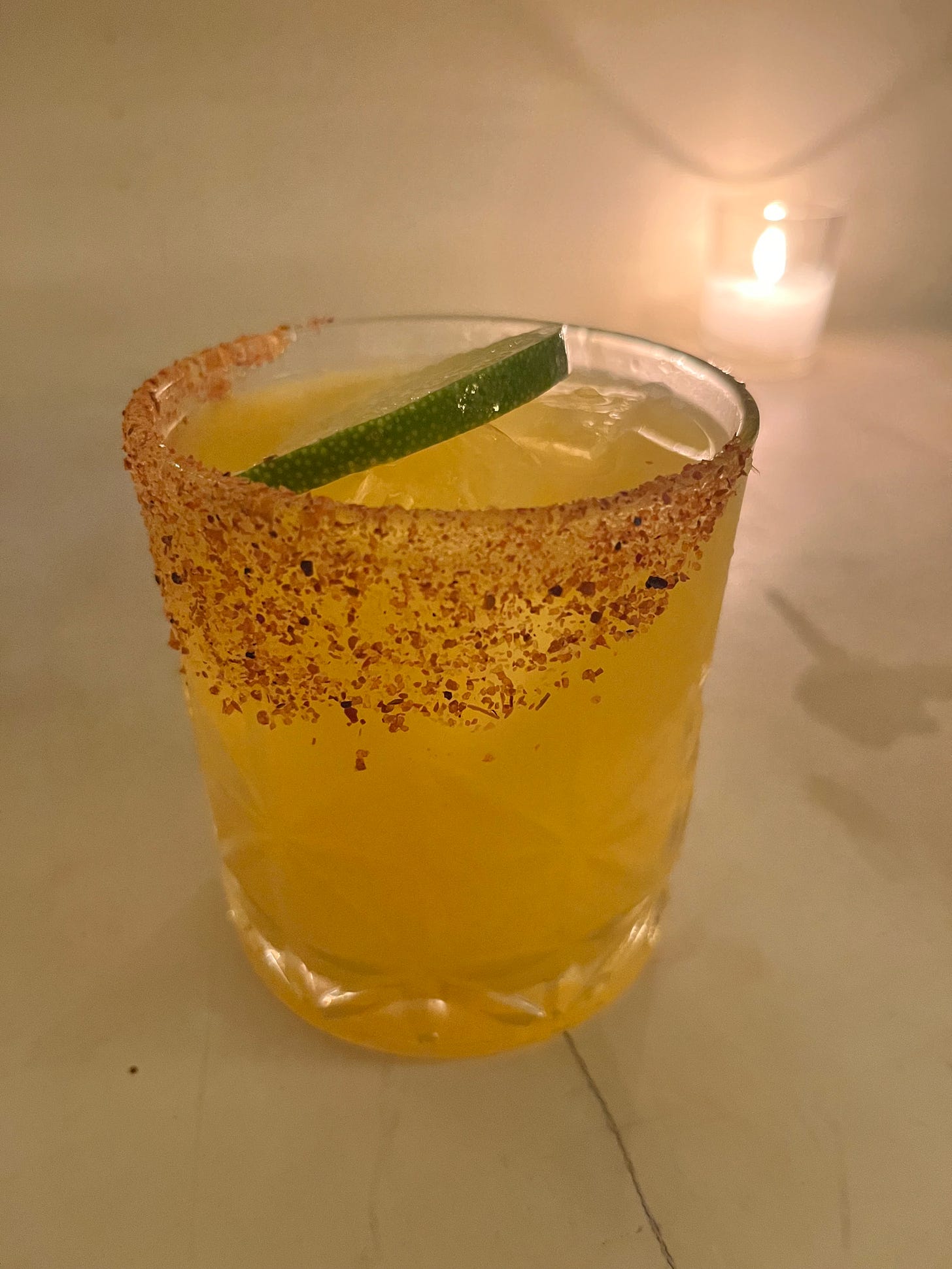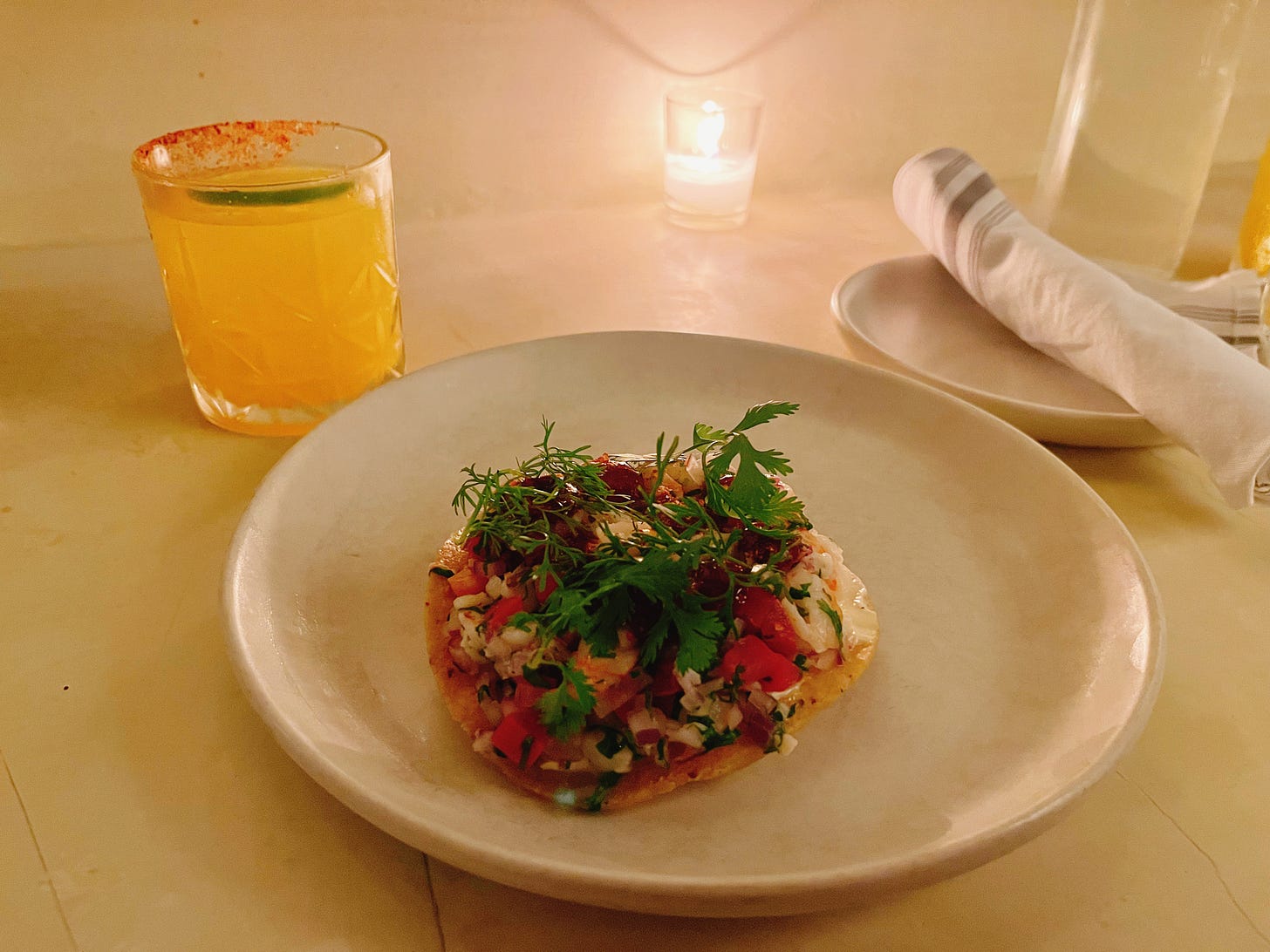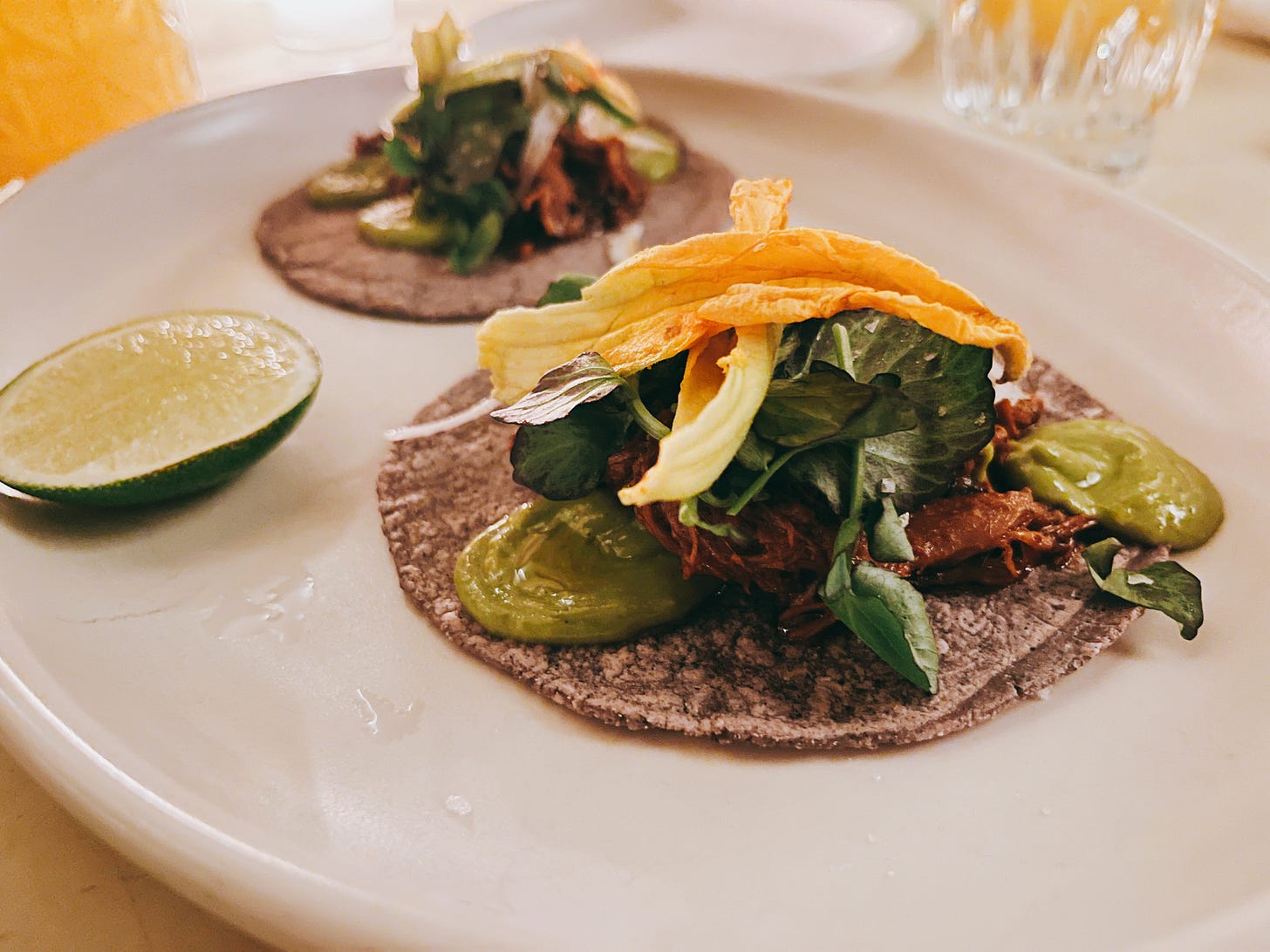I’ve heard it said that there are two types of Michelin star restaurants: those that exist for rich people, and those that display true excellence. Of course, excellence is subjective, and there’s a large intersection between the two sets anyway, but I don’t disagree. What is meant by “for rich people”, I think, is this: certain establishments seem to be (or, at some point, to have been reduced to) an epiphenomenon of wealth, whose raison d’être is to signal the restaurant-goer’s social cachet rather than to propagate a culinary vision. Platforms like Appointment Trader act as a marketplace for buying and selling reservations; when I checked this morning, the average price for Carbone, a former one Michelin star Italian restaurant, was $240; for two Michelin star Korean restaurant Atomix, determined bidders had driven the average price up to $1135. And that’s merely the cost of admission; people are quite literally bidding for the privilege of snagging the impossible-to-get reservation, of dining there, of being seen dining there. The food is not the point.
Figuring out whether a restaurant, especially one that has generated a lot of hype, falls into the former or latter group is a rather interesting (if costly) exercise. This leads me to Oxomoco. I’ll start by saying that Oxomoco doesn’t suffer from nearly the same excesses as a Carbone or an Atomix. It was possible for me to book a same-day reservation at a reasonable time, 8:45pm, and its price point isn’t as inaccessible. However, it presents itself in a similar manner—that is, as a dining experience unto itself; a destination.
The restaurant is airy, even at night; with distressed white walls, wicker seats, and leafy plants hanging from the ceiling, its interior fuses an industrial aesthetic with the charm of a greenhouse or veranda.
To start, I got the spicy mango margarita; the mild heat of the Tajín salt rim added complexity to an otherwise sweet drink, and the pour was generous. My boyfriend got the mezcal-added version, which is a visual double of the default but unmistakably distinct in terms of taste, since the smokiness significantly alters the flavor profile. I enjoyed the cocktails enough that I’d consider coming back here just for drinks.
For the table, we got the shrimp ceviche tostada and lamb barbacoa tacos. The tostada packed a punch both texturally and taste-wise, with a crunchy shell and tart flavor. The shrimp tasted very fresh, its neutrality rendering it a suitable canvas for the pico de gallo (a much-beloved salsa consisting of tomato, cilantro, white onion, and lime juice). Upon finishing, however, I couldn’t shake my initial reaction: that’s it? It felt like I had just eaten a giant embellished Dorito for $23.
Shrimp ceviche tostada
Lamb barbacoa tacos
I was similarly ambivalent about the lamb barbacoa tacos, which were well-executed but not particularly memorable. The lamb wasn’t gamey, but it also wasn’t melt-in-your-mouth tender. I liked the visual appeal of the floral squash blossoms combined with the mintiness of the salsa pipicha and the citrus notes provided by the lime wedge, but would have liked the taste of watercress to be more distinct. My boyfriend commented that they appeared to be tacos “in form only,” which got me thinking about the makings of a good taco. I came up with the following four criteria:
Tortilla: Flavor-wise, it should taste strongly of nixtamalized corn. Texture-wise, it should be a bit pliable so that it doesn’t split when you fold it, while retaining the structural integrity necessary to hold the ingredients.
Protein: Whether it’s meat or a vegetarian alternative, the filling should be crispy, flavorful, and diced.
Salsa: The acidity and freshness of the sauce should act as a counterpoint to the protein.
Size: The tortilla should be small enough to fit easily in one hand.
Oxomoco’s tortillas are made of corn, but the corny flavor isn’t foregrounded, nor does it linger; the meat is cooked well; the salsa effectively cuts the fattiness of the meat; the portions (two per dish, and best described as appetizer-sized, even by my standards) could have been a bit larger.
Given its one Michelin star, I came to Oxomoco with high hopes but left with very much the same conviction as before: the concept of elevated tacos, as well as the concomitant price tag, doesn’t quite compute. I feel the same way about elevated ramen and its distant cousin, ramyun, epitomized in NYC by Jeju Noodle Bar—but that’s a discussion for another time. While there are other dishes on Oxomoco’s menu, such as bavette and a wood-fire roasted half chicken, it’s clear that the tapas (and more specifically the tacos, which constitute over a quarter of the offerings) are meant to be the main draw. Despite being well-constructed, these tacos were ultimately unable to sustain the weight of my expectations; in its desire to exercise restraint and bring a light touch to a dish that is often heavy, Oxomoco failed to leave a mark.


